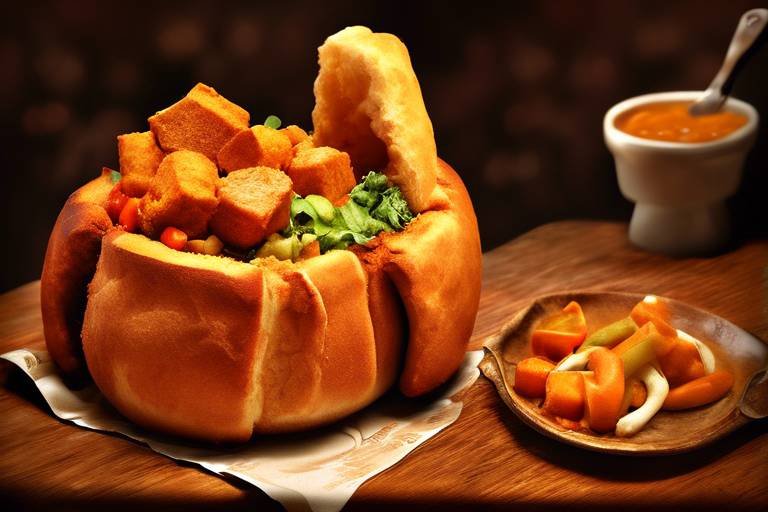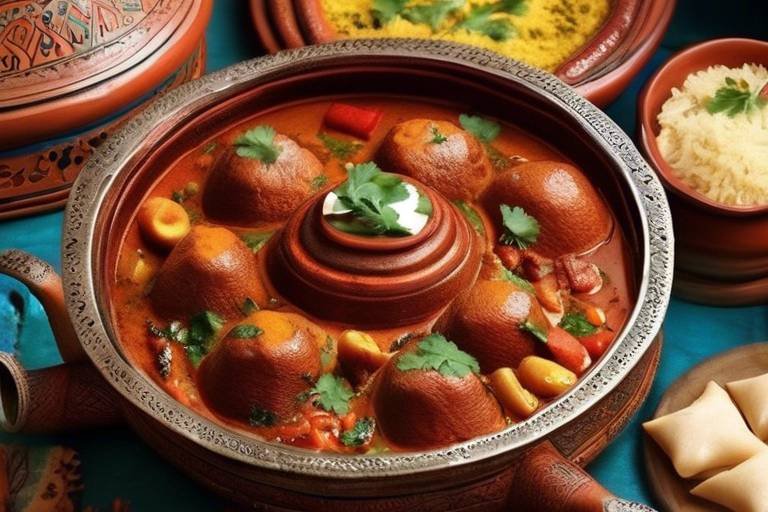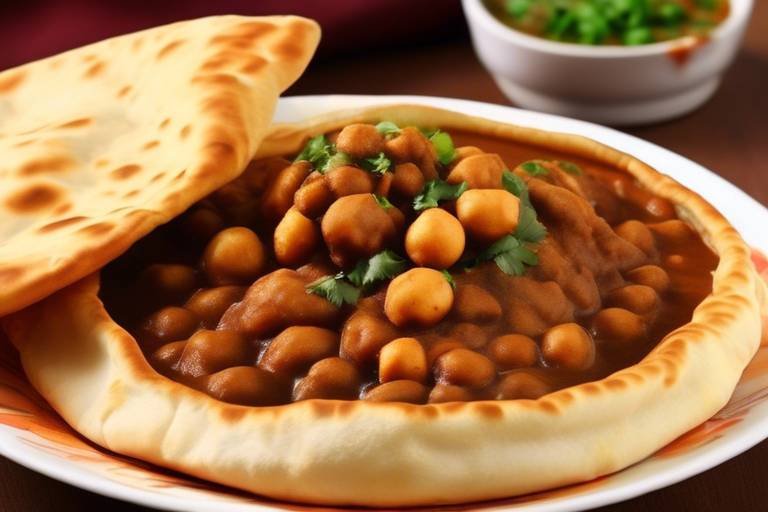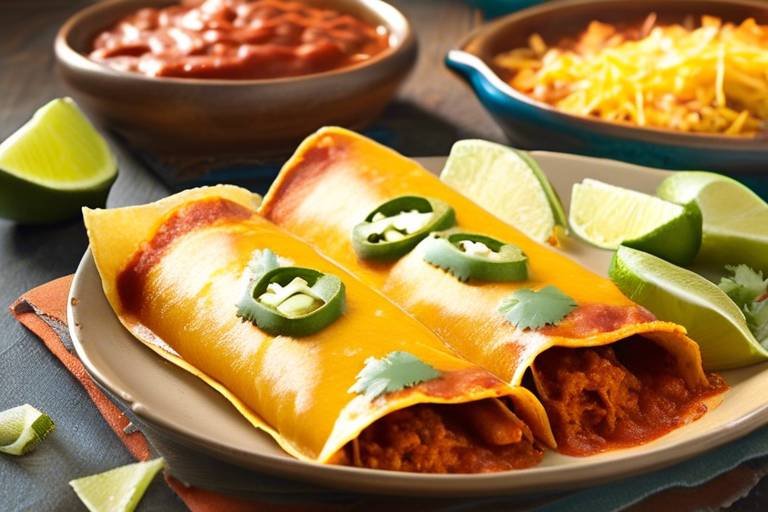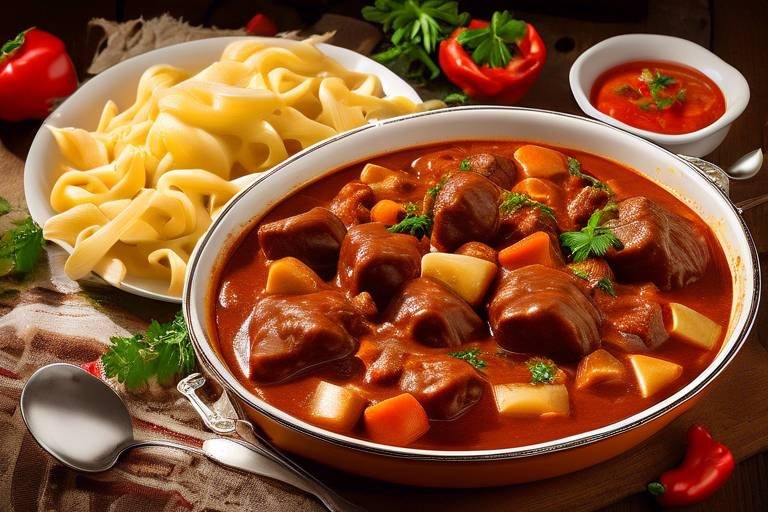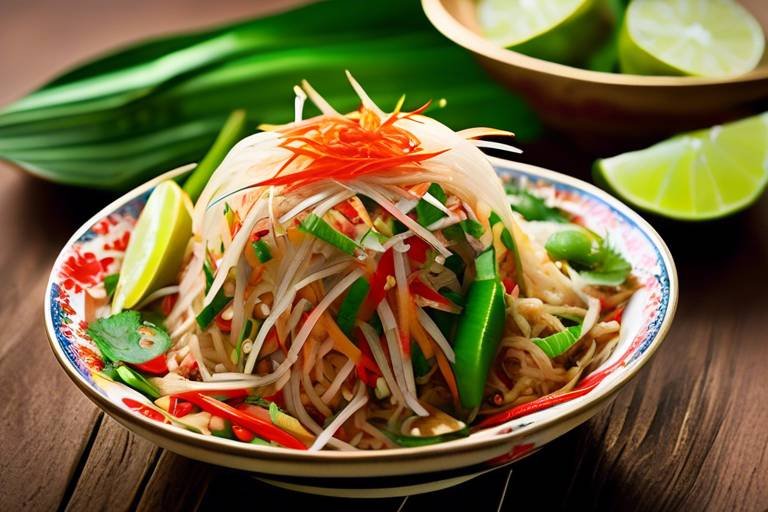Exploring the Flavors of Traditional South African Bunny Chow
South African Bunny Chow is a beloved dish that encapsulates the diverse flavors and cultural richness of the country. Originating from the Indian community in Durban, Bunny Chow has a fascinating history that dates back to the early 20th century. Initially served as a convenient meal for Indian laborers, Bunny Chow has evolved into a culinary icon celebrated across South Africa and beyond.
The key ingredients of Bunny Chow typically include a hollowed-out loaf of bread filled with a spicy curry, often made with chicken, lamb, or vegetables. The bread serves as both a container and an integral part of the dish, soaking up the flavorful curry and adding a unique texture to each bite. The preparation of Bunny Chow involves slow-cooking the curry to allow the flavors to meld together, resulting in a dish that is both hearty and aromatic.
Across different regions of South Africa, Bunny Chow has been adapted to suit local tastes and preferences. Variations of the dish can be found, with some regions adding their own unique twist, such as incorporating different spices or using alternative proteins. These regional influences highlight the diversity of South African cuisine and the creativity of its chefs.
Bunny Chow holds a special place in South African culture, symbolizing unity and shared heritage. It has become a popular street food enjoyed by people from all walks of life, as well as a must-try dish for tourists seeking an authentic taste of the country. The dish's cultural significance is evident in its widespread popularity and the sense of community it fosters among those who enjoy it.
Traditionally, Bunny Chow is served with various accompaniments such as sambals, pickles, and chutneys, adding layers of flavor and texture to the meal. The presentation of Bunny Chow is as important as its taste, with chefs often garnishing the dish with fresh herbs or spices to enhance its visual appeal. The experience of eating Bunny Chow goes beyond just the flavors, encompassing all the senses for a truly immersive dining experience.
In recent years, chefs and food enthusiasts have been experimenting with modern interpretations of Bunny Chow, infusing the classic dish with contemporary culinary techniques and innovative ingredients. This fusion cuisine approach has led to exciting new flavor combinations and presentations, attracting a younger audience while still honoring the dish's traditional roots.
Despite its indulgent flavors, Bunny Chow can also offer some health benefits when prepared with balanced ingredients and consumed in moderation. The dish's nutritional value lies in its use of fresh vegetables, lean proteins, and aromatic spices, providing a well-rounded meal that can contribute to overall well-being when enjoyed as part of a varied diet.
For culinary enthusiasts visiting South Africa, exploring the world of Bunny Chow offers a unique opportunity to engage with the country's vibrant food culture. Culinary tourism allows visitors to immerse themselves in authentic dining experiences, connecting with local chefs and communities to gain a deeper appreciation for the traditions and flavors that define South African cuisine.

Origin and History
The origins of Bunny Chow can be traced back to the bustling streets of Durban, a coastal city in South Africa known for its vibrant culinary scene. Legend has it that Bunny Chow was created by Indian immigrants in the 19th century who worked in the sugar cane plantations. Facing segregation laws that restricted their access to certain establishments, they ingeniously used hollowed-out loaves of bread to carry curries, creating a portable and filling meal that could be enjoyed on the go.
This innovative way of serving curry quickly gained popularity among the local community and became a staple dish in Durban. Over the years, Bunny Chow has evolved from its humble beginnings to become a beloved symbol of South African street food culture, blending Indian flavors with local ingredients to create a unique culinary experience.
Today, Bunny Chow is not only a delicious comfort food but also a cultural icon that reflects the country's diverse heritage and history. It has transcended its humble origins to become a celebrated dish enjoyed by people of all backgrounds, both in South Africa and around the world.

Ingredients and Preparation
When it comes to the iconic South African dish of Bunny Chow, the play a crucial role in creating its unique and flavorful taste. Originating from the bustling streets of Durban, Bunny Chow has a history deeply rooted in Indian influence and South African culinary traditions.
The key components of Bunny Chow typically include spicy curry, tender meat such as chicken, lamb, or beef, and a hollowed-out loaf of bread that serves as the edible bowl for the delicious curry. The bread used is usually a soft and fluffy white loaf, allowing it to absorb the flavors of the curry while maintaining its structure.
To prepare Bunny Chow, the loaf of bread is hollowed out by removing the soft inner bread, creating a cavity that will later be filled with the piping hot curry. The curry itself is a rich and aromatic blend of spices such as cumin, coriander, turmeric, and chili, cooked with tender pieces of meat, potatoes, and sometimes vegetables to enhance the overall texture and flavor profile.
The preparation process involves slow-cooking the curry until the meat is tender and infused with the spices, creating a harmonious blend of flavors that is both comforting and satisfying. Once the curry reaches the desired consistency, it is carefully ladled into the hollowed-out loaf of bread, ensuring that every bite is a perfect balance of flavors and textures.
Traditionally, Bunny Chow is served with a side of pickles or achar, which adds a tangy and spicy element to complement the richness of the curry. The dish is often garnished with fresh coriander or chopped onions for added freshness and a burst of flavor.
Overall, the ingredients and preparation method of Bunny Chow reflect the diverse culinary influences that have shaped South African cuisine, creating a dish that is not only delicious but also a symbol of cultural fusion and heritage.

Variations and Regional Influences
When it comes to Bunny Chow, the dish showcases a fascinating array of variations and regional influences that reflect the diverse culinary landscape of South Africa. Each region puts its unique twist on this beloved dish, resulting in a delightful tapestry of flavors and textures that cater to different preferences and tastes. From the bustling streets of Durban to the vibrant townships of Johannesburg, Bunny Chow has evolved to embody the distinct character of each locality.
In Durban, the birthplace of Bunny Chow, you can find the classic version featuring tender curry filling nestled in a hollowed-out loaf of bread. This traditional rendition remains a favorite among locals and visitors alike, capturing the essence of authentic South African cuisine. As you venture further inland, you may encounter variations that incorporate different spices, meats, or vegetables, reflecting the regional palate and culinary traditions.
On the western coast, Cape Town's take on Bunny Chow may lean towards a more fusion-inspired approach, blending international influences with local ingredients to create a harmonious medley of flavors. The use of fresh seafood or indigenous herbs and spices adds a unique twist to the dish, offering a refreshing perspective on this iconic comfort food.
Heading towards the eastern regions, you might stumble upon Bunny Chow versions infused with Portuguese or Indian influences, showcasing a vibrant mix of cultures and culinary techniques. These regional variations not only celebrate diversity but also highlight the dynamic nature of South African cuisine, constantly evolving and adapting to new influences.
Whether you prefer a spicy kick from the Durban original or a milder, more aromatic rendition from Cape Town, Bunny Chow's variations and regional influences promise a culinary journey that is as diverse as the country itself. Exploring the different flavors and styles of this beloved dish is not just about satisfying your taste buds but also about experiencing the rich tapestry of South Africa's gastronomic heritage.

Popularity and Cultural Significance
Bunny Chow holds a special place in South African society, not only as a beloved dish but also as a cultural icon that symbolizes unity and heritage. Its popularity transcends boundaries, captivating both locals and tourists with its rich flavors and historical significance. The dish has become a staple in the culinary landscape of South Africa, reflecting the diverse influences that have shaped the country's food culture over the years.
One of the key reasons behind the widespread popularity of Bunny Chow is its ability to bring people together. Whether enjoyed at a bustling street food stall or a cozy family dinner table, Bunny Chow has a way of fostering connections and creating shared memories. It is more than just a meal; it is a communal experience that celebrates the spirit of togetherness and hospitality ingrained in South African traditions.
Moreover, Bunny Chow serves as a cultural ambassador, introducing visitors to the vibrant tapestry of South African cuisine. Tourists flock to local eateries and restaurants in search of an authentic Bunny Chow experience, eager to savor the unique flavors and aromas that define this iconic dish. By immersing themselves in the world of Bunny Chow, visitors gain a deeper appreciation for the country's culinary heritage and the stories woven into each bite.
As Bunny Chow continues to garner acclaim both locally and internationally, its cultural significance remains paramount. Beyond its gastronomic appeal, Bunny Chow embodies the spirit of resilience and creativity that characterizes South Africa, showcasing the country's ability to blend tradition with innovation in a harmonious culinary symphony.

Serving and Presentation
When it comes to serving and presenting Bunny Chow, tradition plays a significant role in enhancing the overall dining experience. This iconic South African dish is typically served in a unique manner that reflects the cultural heritage of the country. The most common way to enjoy Bunny Chow is by using a hollowed-out loaf of bread as a vessel for the flavorful curry filling. This not only adds a distinct visual appeal but also serves a practical purpose, allowing diners to savor every last bit of the delicious curry.
Accompaniments and garnishes are essential components of serving Bunny Chow. Traditional condiments such as sambals, pickles, and chutneys are often served alongside the dish to complement the rich flavors of the curry. These side dishes provide a balance of textures and flavors, elevating the dining experience to a whole new level. Additionally, fresh herbs like cilantro or parsley are used as garnishes to add a pop of color and freshness to the dish.
Furthermore, the presentation of Bunny Chow is an art form in itself. Chefs and home cooks alike take pride in arranging the dish in an aesthetically pleasing manner, paying attention to detail and symmetry. The vibrant colors of the curry, the golden hue of the bread, and the colorful accompaniments all come together to create a visually stunning dish that is as delightful to look at as it is to eat.
For a more formal dining experience, Bunny Chow can be served on a platter with individual portions neatly arranged, allowing each diner to enjoy their own serving. This communal style of dining fosters a sense of togetherness and conviviality, making the meal a shared experience that brings people closer together.
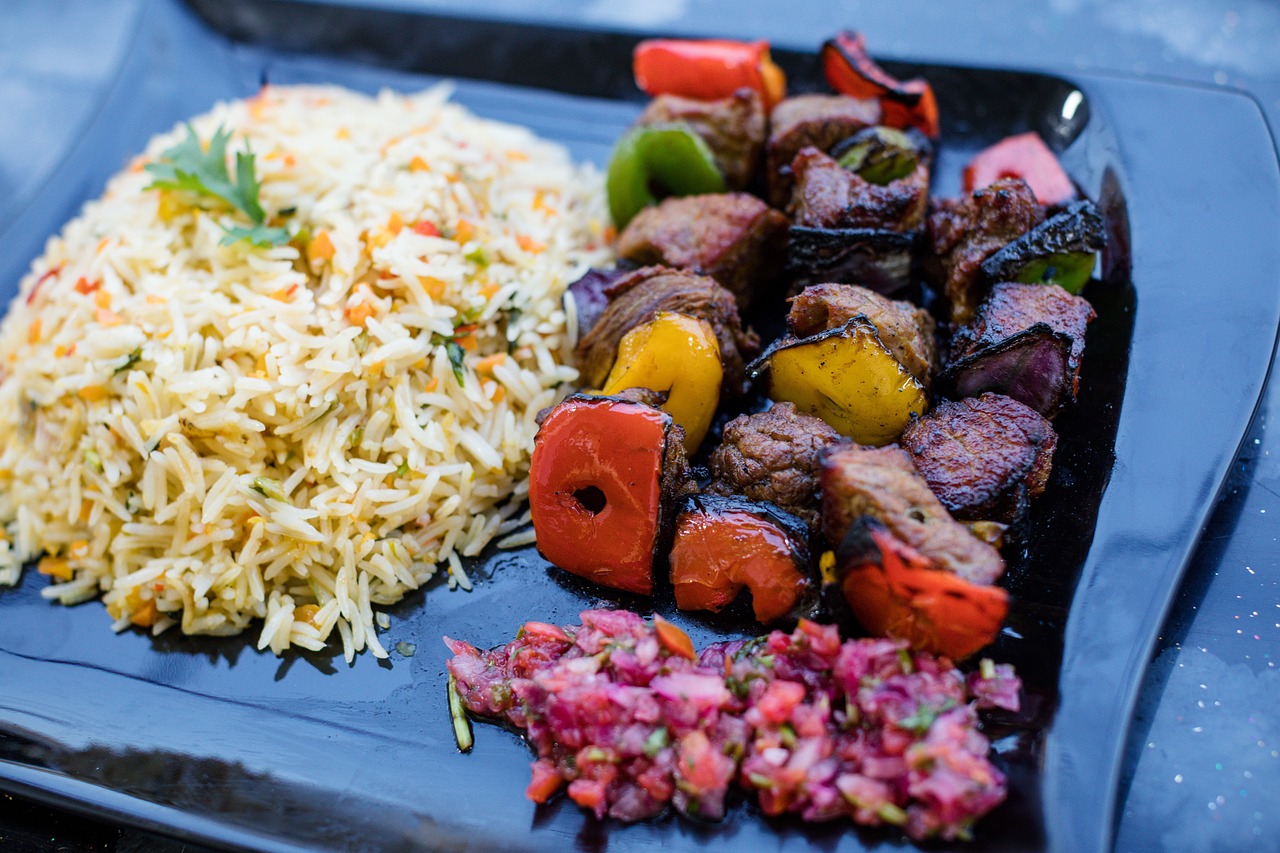
Modern Interpretations and Fusion Cuisine
Modern Interpretations and Fusion Cuisine have taken the traditional South African Bunny Chow to new heights of culinary creativity. Chefs and food enthusiasts alike are constantly experimenting with innovative ways to reimagine this iconic dish, blending traditional flavors with contemporary techniques to create unique and exciting variations.
One popular modern interpretation is the fusion of Bunny Chow with international cuisines, such as Indian, Chinese, or Italian. These fusions result in delightful flavor combinations that offer a fresh twist on the classic dish while still honoring its South African roots.
Chefs are also exploring different ingredients and cooking methods to add a modern touch to Bunny Chow. From gourmet fillings like lamb curry or seafood, to vegan options using plant-based proteins, the possibilities are endless when it comes to reinventing this beloved dish.
Moreover, presentation plays a key role in modern interpretations of Bunny Chow. Chefs are focusing on creating visually appealing dishes that not only taste delicious but also look stunning on the plate. Garnishes, edible flowers, and artistic plating techniques are often used to elevate the dining experience and add a touch of elegance to the traditional fare.
Overall, the world of modern interpretations and fusion cuisine has brought a fresh perspective to Bunny Chow, showcasing the versatility and adaptability of this traditional South African dish in the ever-evolving culinary landscape.

Health Benefits and Nutritional Value
Bunny Chow, despite its indulgent and flavorful nature, offers some surprising health benefits and nutritional value. This iconic South African dish, when prepared with care, can be a wholesome addition to a balanced diet. The primary ingredients of Bunny Chow typically include a combination of vegetables, protein, and carbohydrates, providing a well-rounded meal that satisfies both taste buds and nutritional needs.
One of the key health benefits of Bunny Chow lies in its diverse range of ingredients. Vegetables such as tomatoes, onions, and potatoes are commonly used, offering essential vitamins, minerals, and dietary fiber. These components contribute to overall well-being, supporting digestion, immunity, and overall health.
Additionally, Bunny Chow often features protein sources like chicken, lamb, or beans, which are vital for muscle growth, repair, and energy production. The protein content in Bunny Chow helps to keep you feeling full and satisfied, making it a substantial meal option.
Moreover, Bunny Chow's nutritional value can be enhanced by choosing whole-grain bread as the base. Whole grains provide complex carbohydrates that release energy slowly, promoting sustained vitality and preventing blood sugar spikes. This choice adds a nutritious element to the dish, making it a more wholesome meal option.
When consumed in moderation and as part of a balanced diet, Bunny Chow can be a flavorful and nutritious choice for individuals looking to enjoy a taste of South Africa while prioritizing their health. By incorporating fresh ingredients, lean proteins, and whole grains, Bunny Chow can offer a satisfying dining experience without compromising on nutritional value.

Culinary Tourism and Authentic Dining Experiences
When it comes to experiencing the vibrant food culture of South Africa, culinary tourism offers a unique opportunity to indulge in authentic dining experiences that go beyond just tasting the local cuisine. It allows visitors to immerse themselves in the rich history and diverse flavors of the country, creating lasting memories through the exploration of traditional dishes like Bunny Chow.
Imagine embarking on a culinary journey that takes you through bustling markets, family-owned restaurants, and hidden gems known only to the locals. Each bite of Bunny Chow tells a story, reflecting the fusion of flavors from different communities and the passion that goes into preparing this iconic dish.
Authentic dining experiences not only satisfy your taste buds but also provide a glimpse into the heart and soul of South Africa. From the aromatic spices to the warm hospitality, every aspect of the dining experience is carefully crafted to offer a true taste of the country's culinary heritage.
For those seeking a deeper connection with the local culture, culinary tours offer a chance to meet chefs, visit food markets, and even participate in cooking classes to learn the secrets behind traditional recipes like Bunny Chow. It's a hands-on experience that allows you to engage with the food in a meaningful way, creating a sense of appreciation for the culinary traditions of South Africa.
Whether you're a food enthusiast, a cultural explorer, or simply someone looking to expand your palate, culinary tourism in South Africa promises an unforgettable journey filled with flavors, stories, and the shared joy of breaking bread together.
Frequently Asked Questions
- What is Bunny Chow?
Bunny Chow is a traditional South African dish that consists of a hollowed-out loaf of bread filled with curry. It originated in the Indian community of Durban and has since become a popular street food across South Africa.
- Is Bunny Chow always served in a bread loaf?
While the classic Bunny Chow is served in a bread loaf, there are variations where it can be served in a bowl or on a plate. The bread loaf serves as a unique and edible container for the flavorful curry filling.
- What are the typical ingredients used in Bunny Chow?
The key ingredients in Bunny Chow include curry spices, meat (such as chicken, lamb, or beef), vegetables, and the bread loaf. The curry is often rich in flavor, aromatic, and can be customized based on personal preferences.
- How did Bunny Chow get its name?
The name "Bunny Chow" is believed to have originated from the Indian word "baniya," which refers to the Indian community involved in the dish's creation. Over time, "baniya" transformed into "bunny," and "chow" is a slang term for food.
- Can Bunny Chow be made vegetarian or vegan?
Yes, Bunny Chow can be adapted to suit vegetarian or vegan diets by using plant-based protein sources such as lentils, chickpeas, or tofu instead of meat. The curry can be prepared with a variety of vegetables to create a delicious meat-free version.

